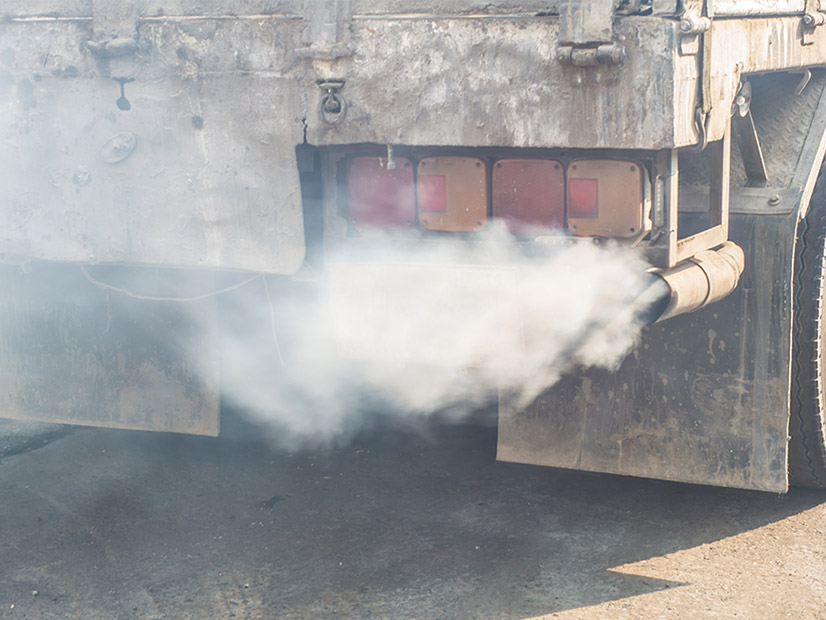EPA on Tuesday announced stringent new emission standards for heavy-duty vehicles beginning with model year 2027.
First proposed in March, the rules mark the first upgrade of heavy-duty emission standards in more than two decades. They are aimed primarily at nitrogen oxides, pollutants that cause smog. NOX is also considered a major health hazard, especially for people living in neighborhoods near highways or manufacturing plants.
The new rules, which EPA said are more than 80% stronger than current standards, also will cover truck engines up to two and a half times longer than existing standards, resulting in engine warranties up to 4.5 times longer, according to the agency.
Fifteen-liter diesel truck engines have a lifetime of 1 million miles or longer without requiring a major overhaul, according to industry statistics, meaning a truck built today will last an average of 15 years.
“These provisions guarantee that as target vehicles age, they will continue to meet EPA’s more stringent emissions standards for a longer period. The rule also requires manufacturers to better ensure that vehicle engines and emission control systems work properly on the road,” the agency said.
There are about 3 million heavy trucks operating on U.S. highways, according to industry estimates, and of these about 800,000 are owner operated. The new NOX standards appear to address that as well, noting that “manufacturers must demonstrate that engines are designed to prevent vehicle drivers from tampering with emission controls by limiting tamper-prone access to electronic pollution controls.”
The rules will also aim to improve emissions in stop and go traffic or idling. An EPA analysis found that “current NOX controls are not effective under certain low-load operating conditions, such as when trucks idle, move slowly or operated in stop-and-go traffic.”
EPA intends to propose two additional rulemakings by the end of March 2023. Taken together, the final rules “would put in place stringent long-term standards that would reduce smog, soot and climate pollution from heavy-duty vehicles and would include consideration of greater adoption of zero-emissions vehicle technologies,” EPA noted in a backgrounder.
The announcement follows months of heavy lobbying by truck-makers concerned that stringent emission standards for internal combustion engines come at a time when the industry is slowly moving toward battery-electric and fuel cell-electric power systems.
Environmental groups cheered EPA’s action but also said more work is needed.
“After two decades of inaction, EPA is finally moving to cut harmful truck tailpipe pollution,” Britt Carmon, the Natural Resources Defense Council’s federal clean vehicles advocate, said in a statement. “But these standards fall short, and the agency missed a critical opportunity to slash soot and smog and accelerate the shift to the cleanest vehicles.
“EPA now needs to move quickly to put in place the next round of standards that will accelerate the transition to zero-emitting trucks so that we can all be free from the tailpipe pollution that is harming our health and accelerating climate change.”
Vickie Patton, general counsel for the Environmental Defense Fund, said that the “long awaited” final NOX standards will significantly reduce the pollutant and over time save thousands of lives.
But, she said, “it is also vitally important that EPA move forward swiftly to recognize protective state standards adopted by California and numerous other states and move swiftly to issue a new generation of climate and air pollution standards that recognize 21st century solutions for new model year 2027 and later vehicles — standards that leverage the Inflation Reduction Act’s game-changing investments in zero-emitting trucks.
“American manufacturers, fleets, workers and communities are seizing the historic Inflation Reduction Act and [Infrastructure Investment and Jobs Act] investments in zero-emitting trucks and buses to innovate, altogether eliminate the pollution from rolling smokestacks, and lead our nation to a healthier and brighter future.”



